With the pit stop in Cape Verde, The Ocean Race offered the five Imoca teams an exciting break on their way around the world. UN Secretary General Antonio Guterres, accompanied by Ulisses Correia e Silva, Prime Minister of Cape Verde, visited the teams in Mindelo and underlined the importance of the race’s efforts to raise awareness of marine pollution. Meanwhile, there was little time for the athletes to enjoy this political tribute to their own race. For the GUYOT environnement – Team Europe, it was a matter of making the yacht fit again for the next start since the arrival at the finish line on Sunday night.
“The pit stop here on the island is very different from the setup for the start in Alicante. But the participation of Antonio Guterres at the Ocean Race Summit and the visit of Ulisses Correia e Silva were inspiring moments and show the importance of the race for Cape Verde,” said Jens Kuphal, team manager of GUYOT environnement – Team Europe. However, the team’s focus was on the boat after the tough first leg. The sailing crew was especially challenged, because according to the regulations the repair work could not be done by the direct intervention of the technical team. As at sea, the shore crew around Thomas Cardrin was only on hand to advise. “The crew did a complete check-up, checked rigging, foils, structure, the engine and the watermaker. Overall, the yacht is in good shape, has no structural damage,” Cardrin reported. “However, there was some work to be done. After the two battens in the mainsail broke, the replacement battens had to be fitted again. A broken stanchion had to be repaired. Our J3 was checked and repaired. The repaired damage in the mainsail was reworked again. We have just enough material to fix the sails, but we will not have so much left over spare for the leg 2. So hopefully they will not break to much sails. Because no more spare parts were allowed to be brought on board here in Cape Verde.”
The strict regulations on pit stops have certainly led to discussions among the teams. “Race Director Phil Lawrence has spoken to all the teams. He is doing a very good job, has listened to the problems with the pit stop. There will probably be no more pit stops like this in the future,” says Robert Stanjek. The Berlin co-skipper of GUYOT environnement – Team Europe will take on even more responsibility on the coming leg of the race from Cabo Verde to Cape Town/South Africa (4600 nautical miles). As planned, there are rotations in the team. Skipper Benjamin Dutreux is passing on the navigator’s duties to Sébastien Simon. Annie Lush is taking a break and will be replaced by Anne-Claire le Berre. In addition to Stanjek and onboard reporter Charles Drapeau, Phillip Kasüske also remains on board.
“This will be very interesting because we have never sailed in this constellation before. I have already sailed the transfer of the yacht from the Caribbean across the Atlantic with Seb, but just not yet in regatta mode. Seb is an engineer, an absolute brain and a brilliant solo sailor. But it will be a challenge to bring together the worlds of solo and team sailing,” says Stanjek. “Anne-Claire is a very experienced sailor, originally from Olympic sailing, but has had great expertise in offshore and just Imoca sailing for years.”
Phillip Kasüske sets the direction of the team: “Everyone wants to take the team forward constructively and has a lot of respect for each other’s performance. That has built us up again even after the problems of the first stage. We have come together well and arrived here in Cabo Verde with a good mindset.”
After almost seven days at sea for the first leg, the second leg to Cape Town looks set to last over two weeks – with some exciting passages that could have a big impact on the race. “Cabo Verde’s long wind shadow can lead to a split in the field right after the start. The first decision will be how to leave the island. But that will not lead to a preliminary decision yet. The Doldrum will probably be passed very far to the west and the St Helena high, which has to be avoided, is currently very far to the south. But there is still a long way to go until then,” says Stanjek.
Phillip Kasüske adds: “In the Doldrums it will be about who is most likely to find the most wind. After that, you have to see if there is a chance to jump on a low pressure system. And at Cape Town it can get tricky again. That’s where you can slow down quickly.”
GUYOT environnement – Team Europe has great confidence in its own yacht, even though the first leg showed that the new hull designs of the four competing teams probably have advantages. “We lack some volume in the bow area. This means we go deeper into the sea when the boat falls off the foils. That seems to have an influence on the average speed,” says Stanjek, who, however, qualifies: “The field was too far apart on the first leg to have direct comparison possibilities. If we stay focused, we will get our moments.”
Sailing Team for Leg 2
- Robert Stanjek – Co-Skipper
- Sébastien Simon – Navigator
- Anne-Claire Le Berre – Pit
- Phillip Kasüske – Bowman
- Charles Drapeau – Onboard reporter


